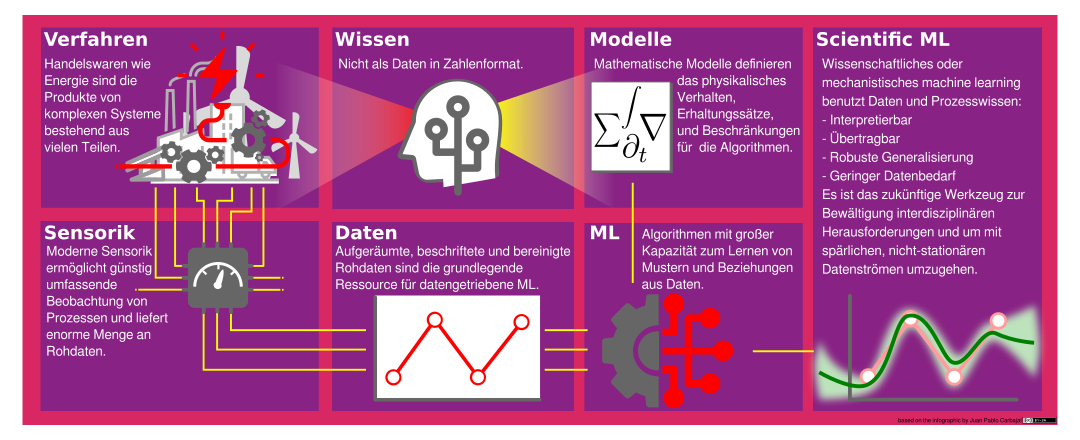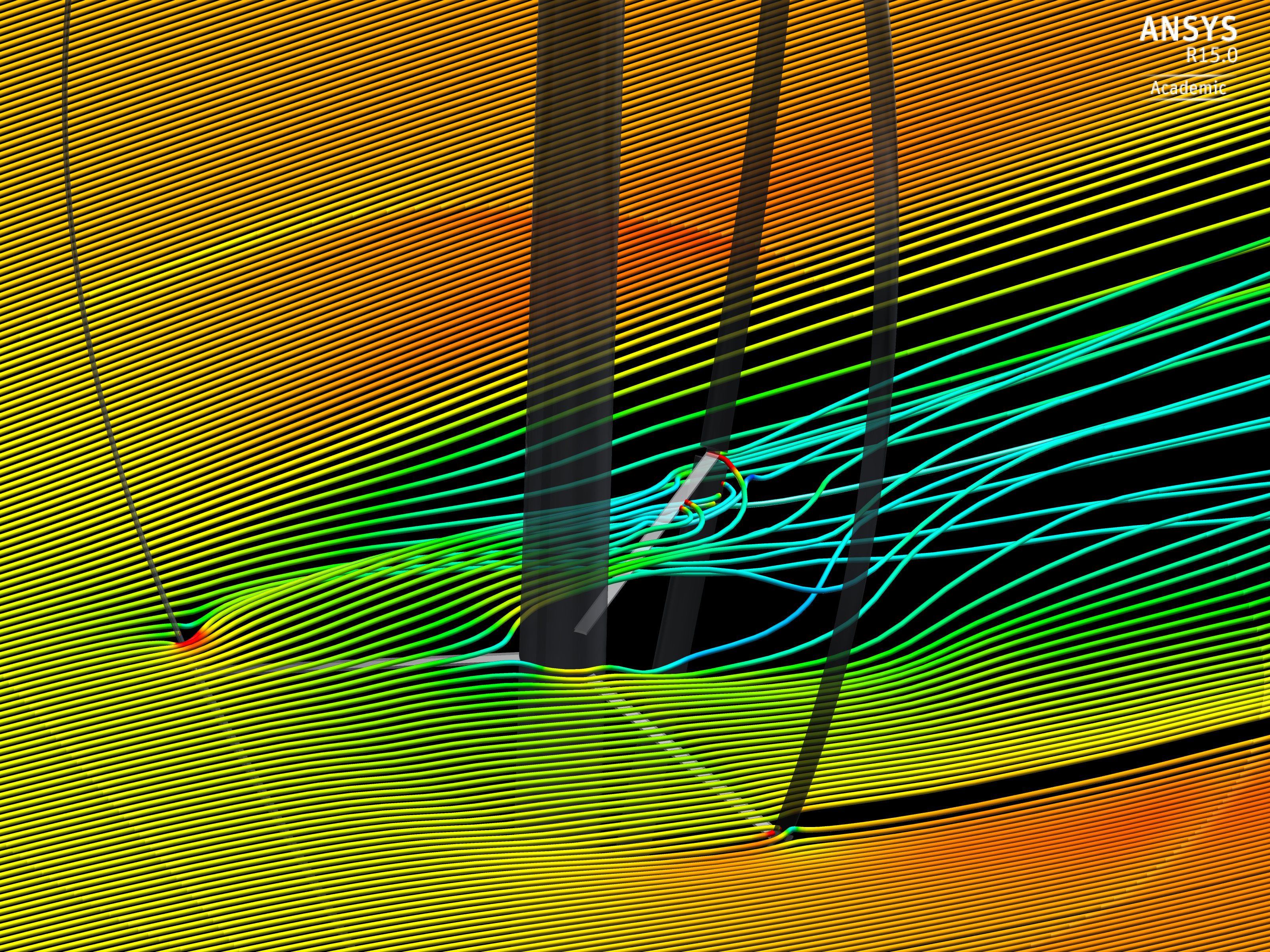Machine Learning for Energy Technology
The path to sustainable energy technologies wanders through a wood of unknowns, filled with hitherto unencountered difficulties. Can machine learning help us to tackle the accompanying technological, societal, and behavioral challenges?
Energy production, storage, and distribution are facing enormous challenges brought by the necessary switch to sustainable technologies and processes. Moreover, electric consumption is still on the raise, and to cap it we need novel interdisciplinary solutions tackling technological, societal, and behavioral issues. The situation is ripe for the use of mathematical and information technologies that emerged in the last few decades: novel materials, sensors, and algorithms.
At the institute for energy technologies (IET), we are committed to the swift transfer of these novelties from labs and academia to industry and the market. Current projects at the IET include the use of unconventional materials in energy storage; modern sensors enhanced with software models are being
tested for wind turbines and compressors; and different guises of machine learning (ML) are being applied to data analyses and modeling of complex systems. The examples below should help you to visualize our efforts.
Wireless power transfer
Placing wired sensors on machines with moving parts, e.g. wind turbine blades or robot arms/legs, is cumbersome and a maintenance burden. This is due to cables that need to cross two or more moving parts of the machine to carry signals and power. One solution are wireless sensors, that not only transmit their data over electromagnetic signals, but also receive their power wirelessly. The group lead by Michael Schueller, published a method to design wireless power transmission (WPT) combining detailed simulations and machine learning [1]. The goal is to find design parameters that optimize the efficiency and information carrying capacity of the transfer. The performance of a given set of parameter values is obtained through a dimensionally-heterogeneous simulation, coupling 2D and 3D electromagnetic models. This simulation is time consuming and renders the automatic optimization of the parameters too long to be practical. Therefore, the authors created a surrogate model (also know as an emulator) of the detailed simulation using regression methods. Surrogate models summarize the input-output (parameters-performance) relation into a succinct mathematical model that can be quickly evaluated, typically few ms in a mainstream computer. Equipped with this tool, the group can quickly optimize WPT designs for custom systems.
Wind energy
Wind turbine blades get damaged by erosion during their operation. If not detected and treated on time, this irreversible accumulation of damage reduces efficiency and ultimately leads to failure. The group lead by Sarah Barber, is developing deep neural networks (NN) for early detection and classification of blade erosion. These NN feed on a myriad of time series signals generated by small sensors mounted on the blade. The algorithms they use, extract all information from data and are susceptible to biases. To improve their performance, the group adds physical information (e.g. the irreversibility of the damage) while training the networks [2]. Adding physical information to purely data-driven methods makes them more interpretable and reduces the data needed to achieve acceptable levels of performance.
Waste incineration
Burning municipal waste avoids the problems with landfills. The heat produced by every tonne of incinerated waste is used for energy generation and heat networks. This gives an economical motivation to the waste incineration plants (KVA) operators, however the process releases hundreds of tonnes of CO2 a day. It is then desired to reduce CO2 release while keeping, or improving, the current level of energy production. To do this, we need to increase the rate at which KVA extracts heat from the incineration byproducts (mostly fumes). Retrofitting heat exchangers of existing KVAs is extremely expensive, hence to attain the goal, we need to make intelligent use of the existing infrastructure. This approach is common to any field in which infrastructure upgrades are prohibitively expensive, like waste water treatment (e.g. Water 4.0 [3]). In an Innosuisse project [4], the group lead by Alex Weber, developed tools to support the clever operation of KVAs. These tools comprise a battery of ML algorithms adapted to make them accessible for KVA designers and analysts. Among other utilities, they include soft-sensors to estimate fouling: an indicator used for predictive maintenance. Soft-sensors are a combination of numerical models and hardware sensors, that permit the observation of otherwise inaccessible signals. They required the development of dimensionally-heterogeneous models customized to exploit data coming from already installed sensors. These models combine 1D heat exchange and transport with ML based surrogates of the thermo-fluid dynamics of the incineration fumes. The group also developed a novel causal indicator [5] of fouling. This indicator requires only knowledge of cause-effect links in the incineration process, instead of specific mathematical relations required by numerical models, which in some cases are practically impossible to determine (e.g. thermo-physical properties of the incineration fumes).
The Machine Learning solution
ML has been buzzing in the media for some time already. As we matured into it, we learned that methods relying solely on data (so called data-driven ML) are not adequate to tackle most of today's energetic challenges. Data-driven ML (DML) ignores the hard earned knowledge that we have about our technologies. This is because our knowledge does not come in a format that DML can readily use. ML that exploits this knowledge is called mechanistic, physics informed, or scientific.
Scientific ML (SciML), having more information to exploit, require less data to achieve acceptable performance, when compared with DML. SciML is easier to interpret and easier to transfer to different scenarios than their data-driven counterparts. Also SciML generalizes better to situation not present in the training data (so called out-of-distribution problem). However, at the time of this writing, mechanistic methods are not as standard as data-driven ones.
SciML is at its infancy, luckily it is an active field of research. An increasing number of academic publications on the topic are being published everyday. At IET we want to speed up their transfer from academia to applications. With the program «KI @ IET» and the «Scientific Machine Learning and Complex Systems» club, we have set Machine learning and Artificial intelligence into our strategic focus. In the future, the IET would like to use SciML as a tool to tackle interdisciplinary problems, involving complex systems, and requiring flexible, yet interpretable, models for the optimal development of our technology.

Energy is the product of complex systems and processes. Data generated by sensors can be used in
data-driven ML. However data-driven ML ignores our knwoledge in the form of mathematical
descriptions of these processes, and the relevant conservation laws and symmetries. SciML combines
data and our knowledge to deliver a new generation of improved models.
Author: Dr. sc. nat. Juan Pablo Carbajal, Institute for Energy Technology Project leader for Data Science and Complex Systems
_______________________________________________________________________________
[1] R. Christen, U. Fischli, T. Franz, M. Schueller and J. Smajic. 2022. «Wireless Power
Transfer System for Linear Drives,» 23rd International Conference on the
Computation of Electromagnetic Fields (COMPUMAG). DOI:
10.1109/COMPUMAG55718.2022.9827503.
[2] G. Duthé, I. Abdallah, S. Barber, E. Chatzi. 2021. «Modeling and Monitoring Erosion of the Leading Edge of Wind Turbine Blades». Energies 2021, 14, 7262. DOI: 10.3390/en14217262
[3] INNOSUISSE 39596.1 IP-EE. 2019-2022. «Digital twin of the boiler fouling process in Energy from Waste plants (EfW)».
[4] J. Pearl. 2019. «The seven tools of causal inference, with reflections on machine learning». Commun. ACM 62, 3 (March 2019), 54–60. DOI: 10.1145/3241036
[5] D. Sedlak. 2014. Water 4.0: The Past, Present, and Future of the World's Most Vital Resource. Yale University Press. ISBN 9780300176490

